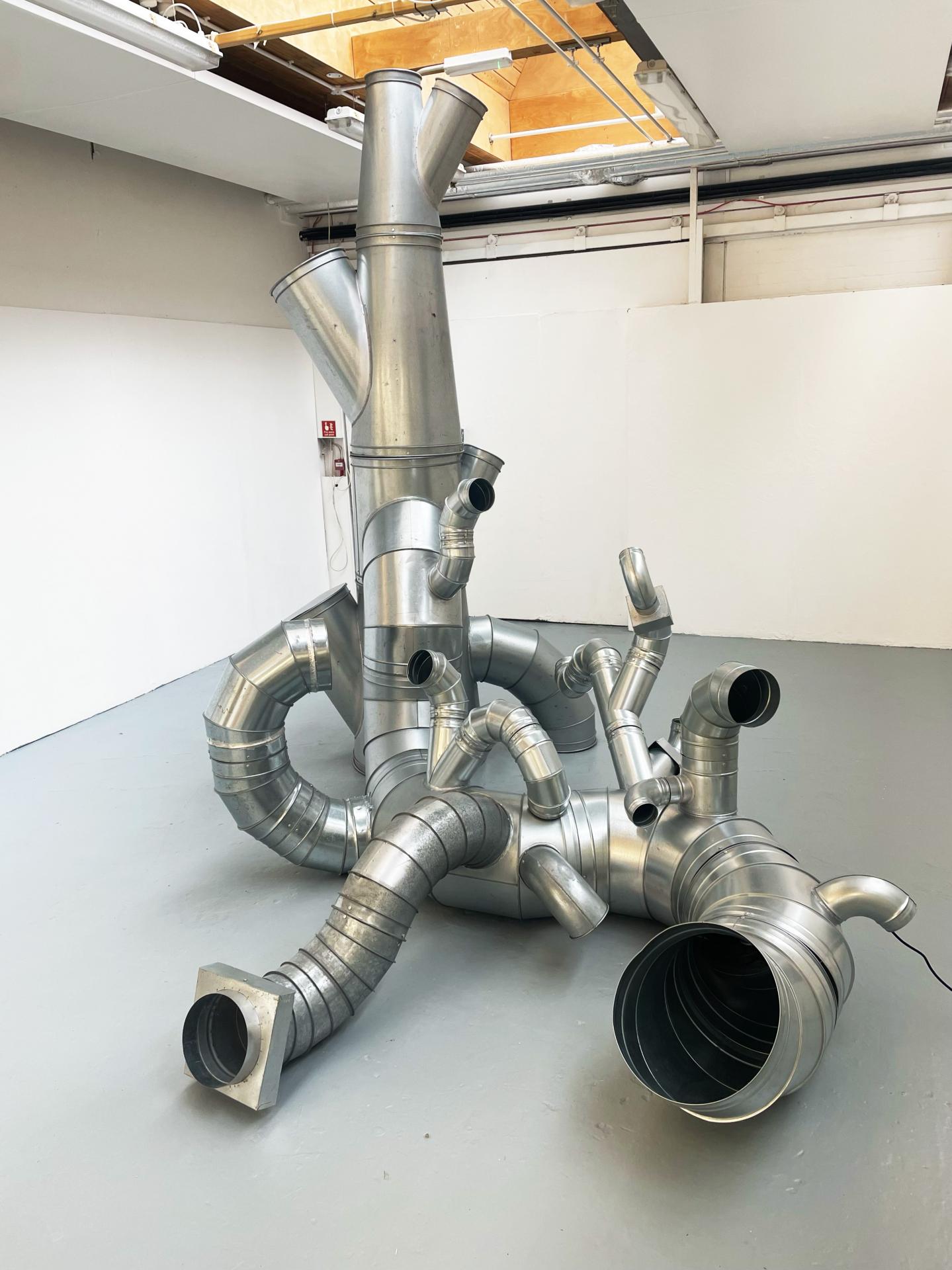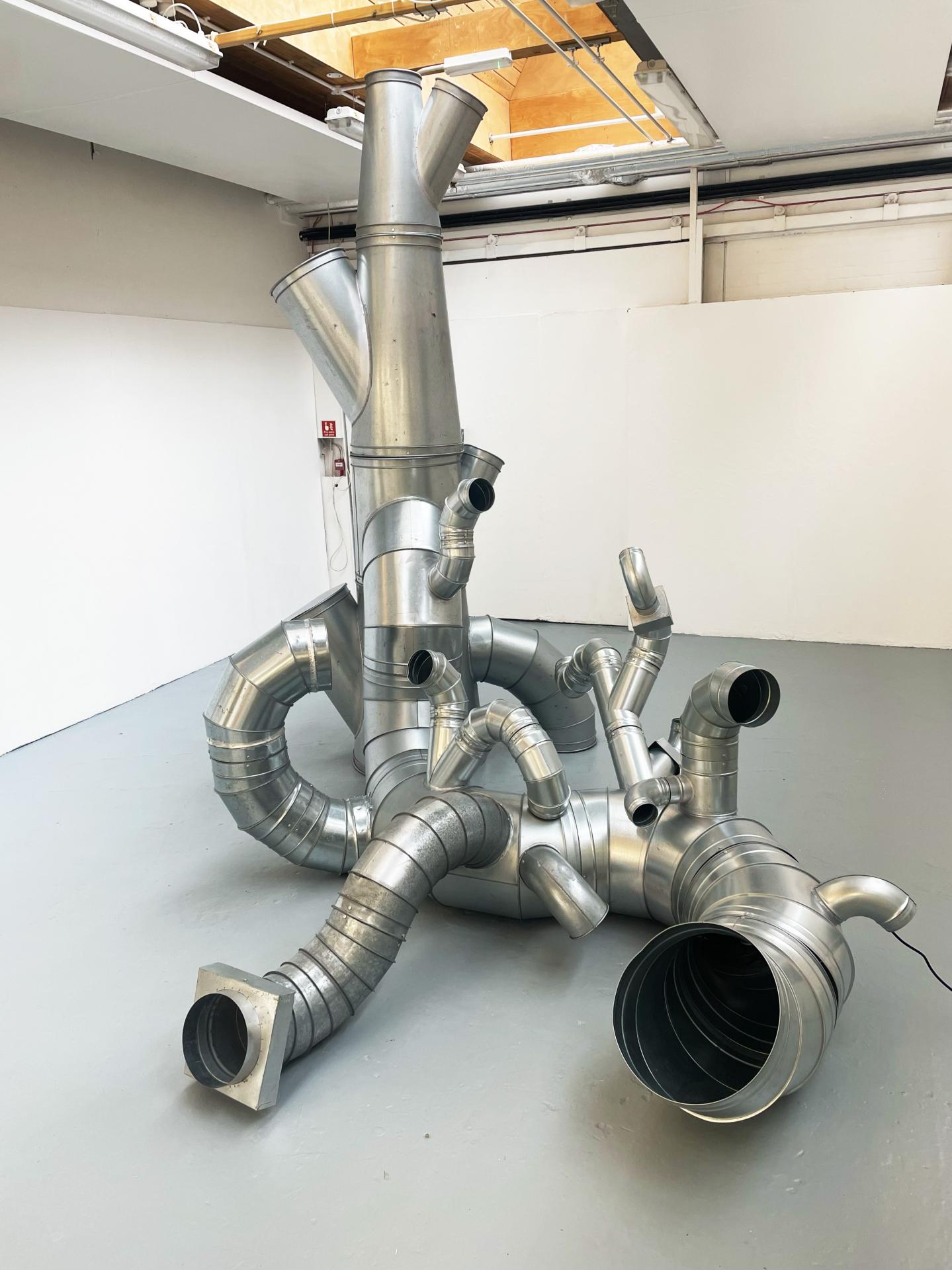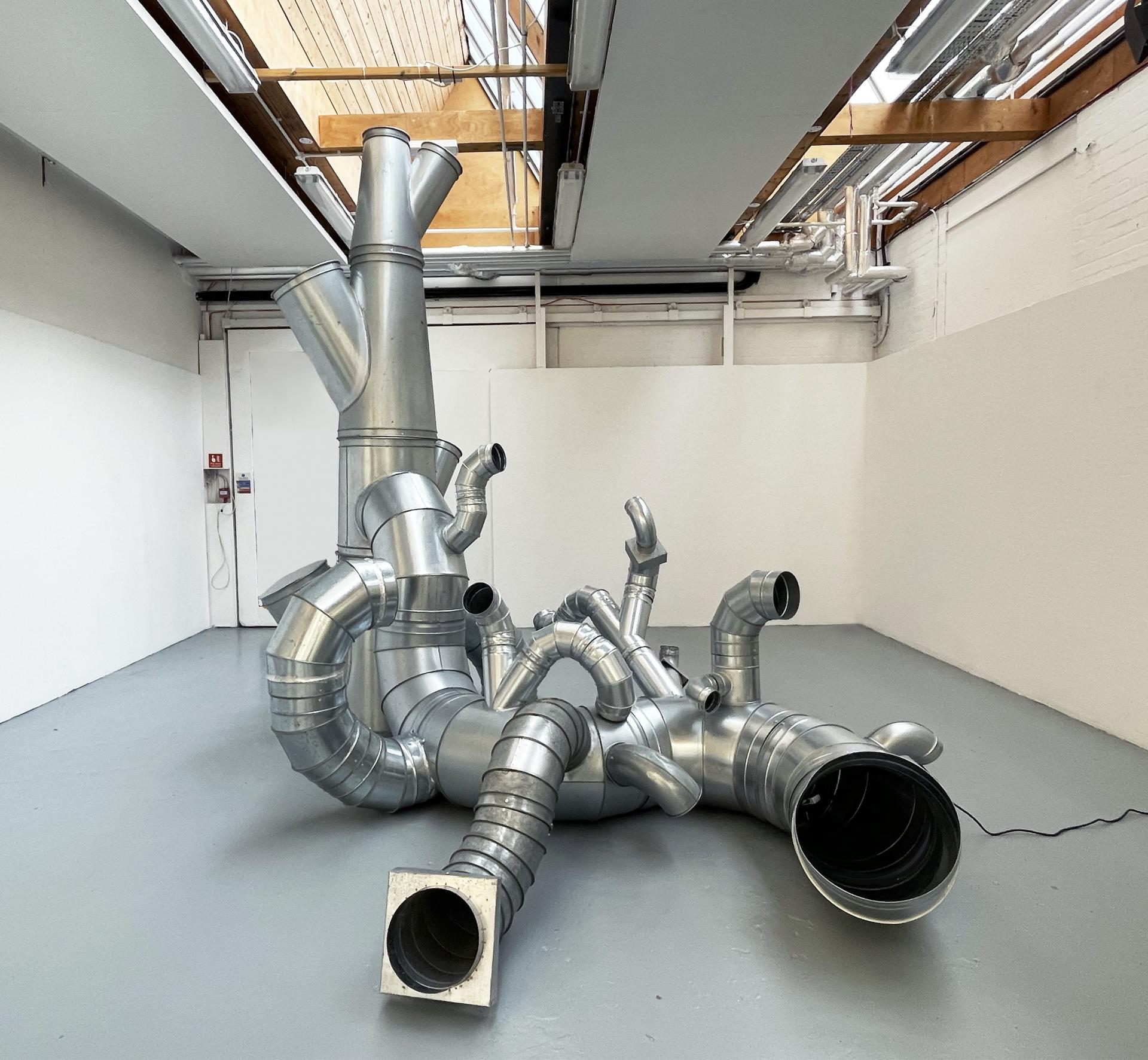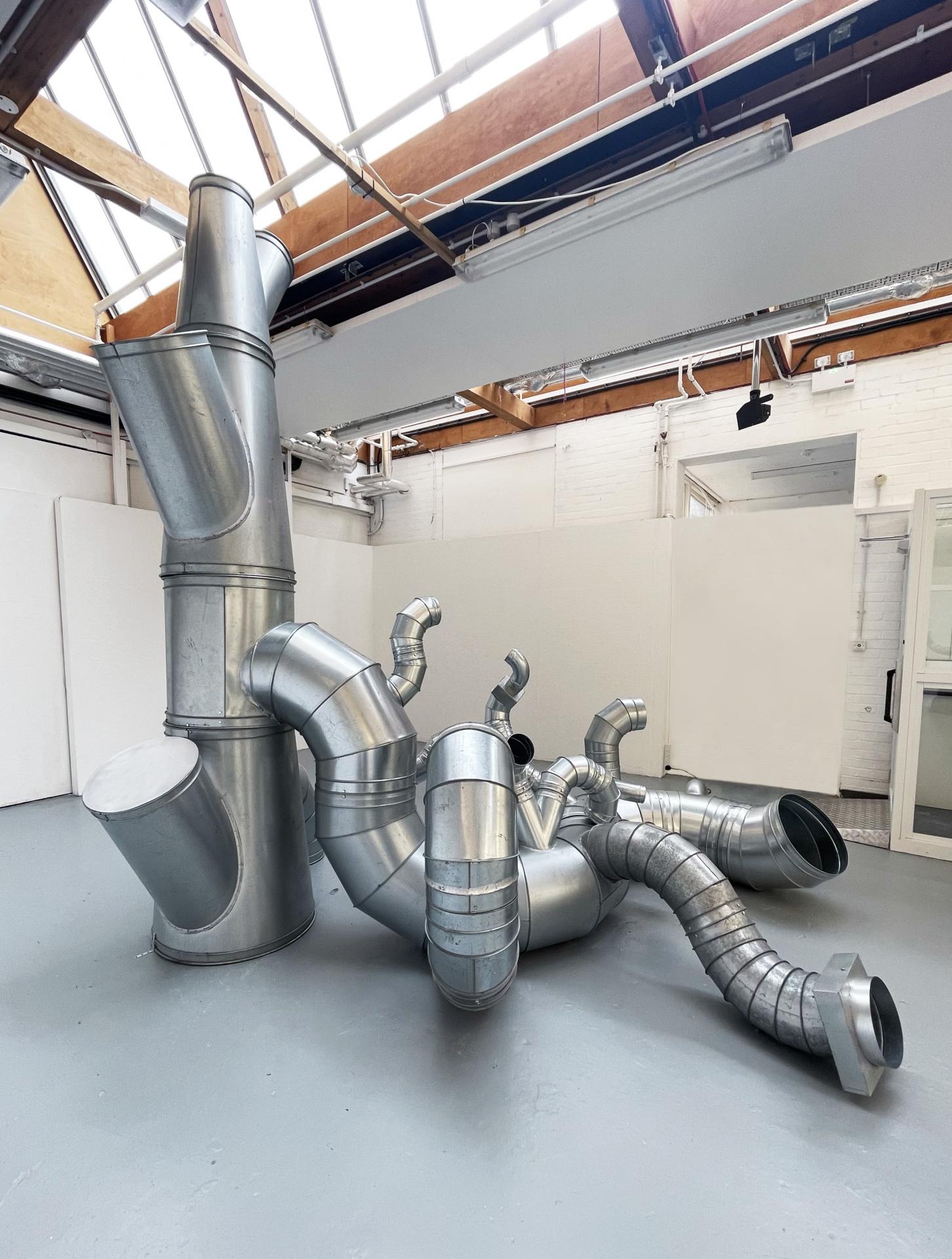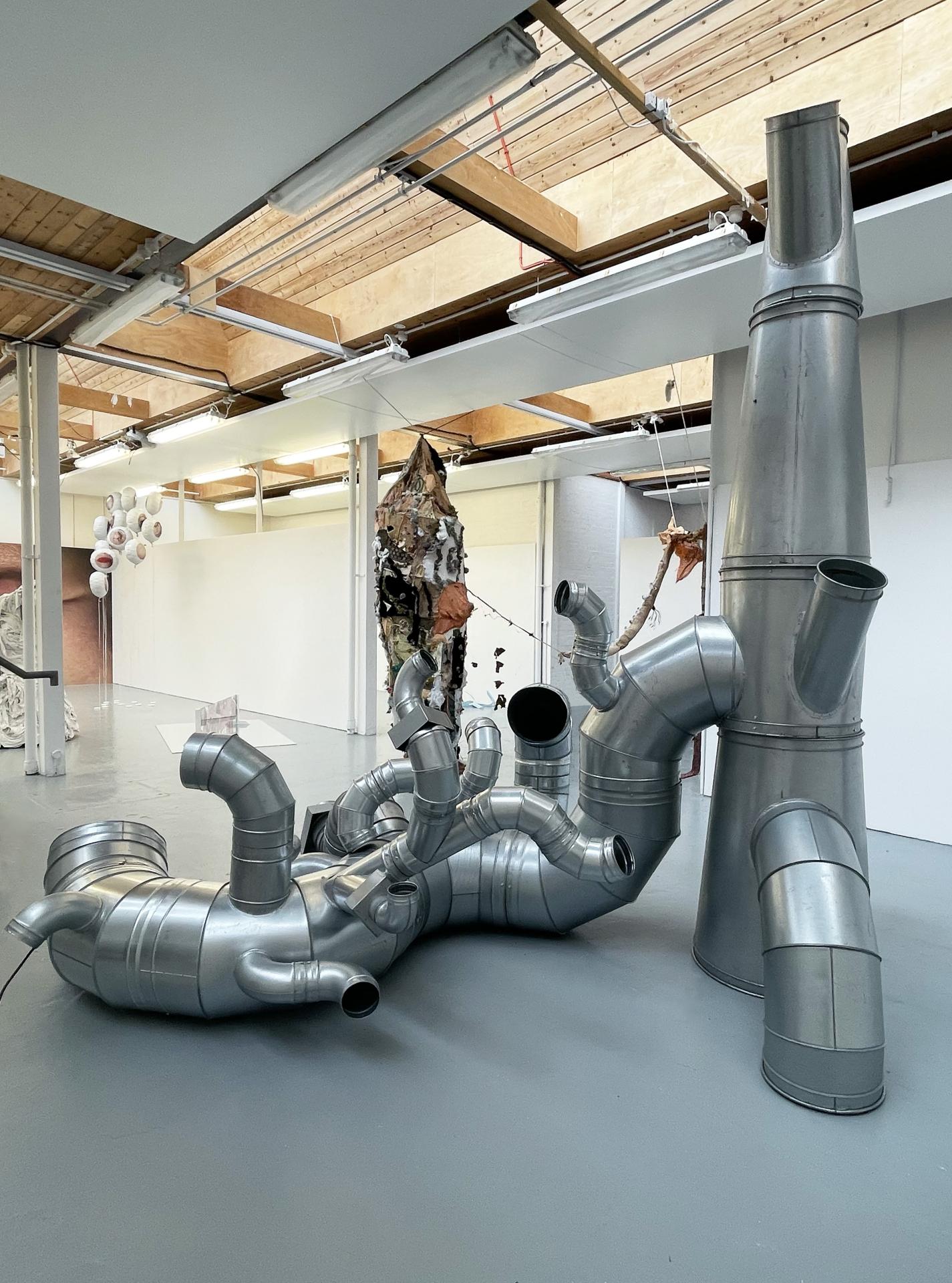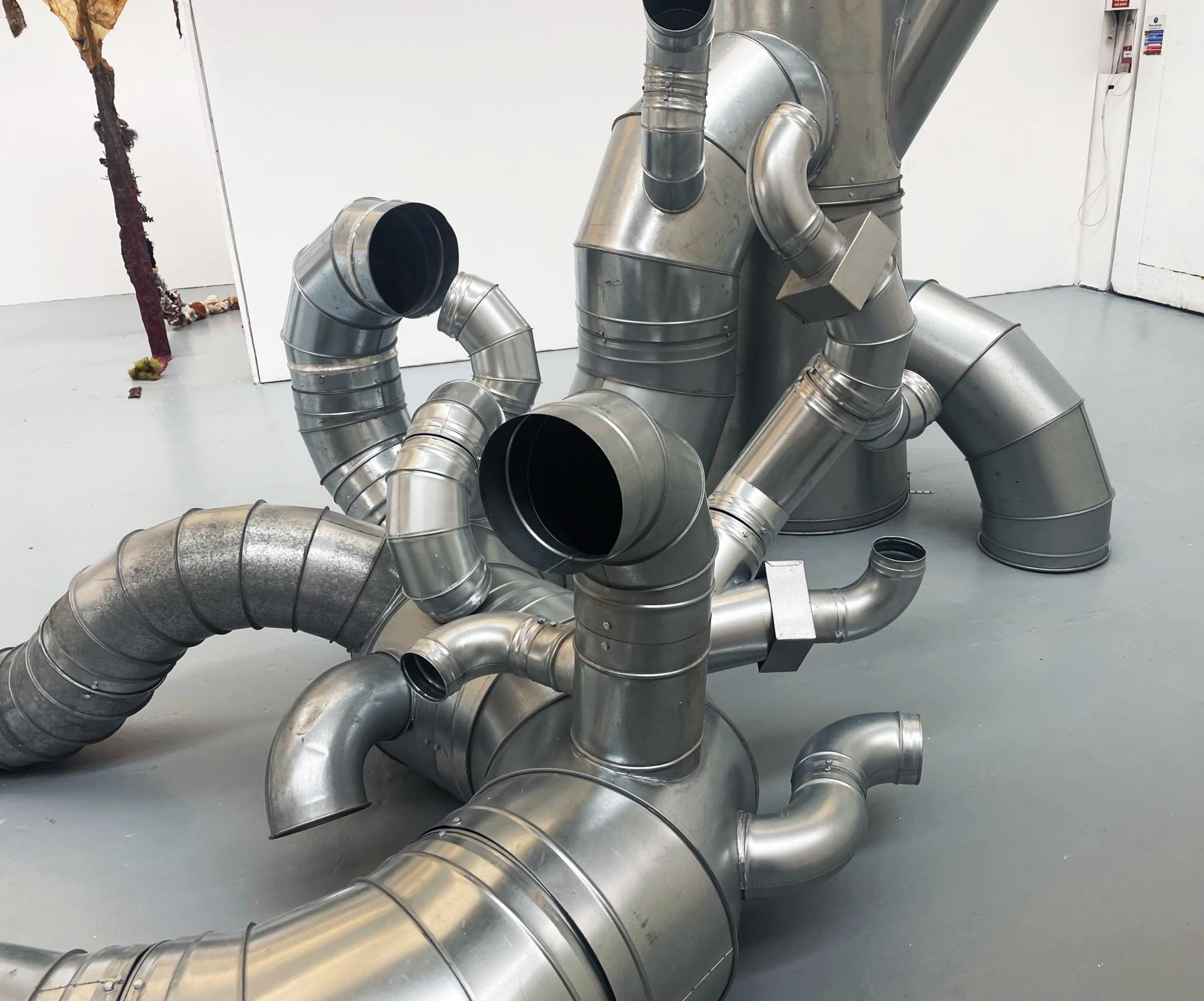‘Hive’ is a multimedia sculptural installation constructed from discarded industrial ducting parts (previously used in air ventilation/fume extraction systems.) The structure contains three distinct audio works played through concealed speakers. Sounds emanate and undergo distortion through a series of tubular extensions, creating the illusion of insect activity within the structure.
The work considers the Earth’s shift into the Anthropocene epoch and the uncertainty surrounding the future of nature, aiming to create a contradictory tension between order and disorder. The structure’s biomorphic form draws inspiration from various organic shapes while maintaining an industrial aesthetic. The towering stack might be interpreted as both a tree and a chimney, other shapes resemble maggots or sprawling crystals, all of which are linked to the Earth and its transformation. Whilst visualising material waste, the work draws attention to the usually concealed networks of pipes and tubes society depends on, despite overlooking the unsustainable ecological consequences of this dependence. The work aims to encourage a shift away from anthropocentrism and the idea that nature exists separately from humans.
The work draws inspiration from Michel Serres’ concept of the ‘Parasite’. It raises questions about the presence of humans as disruptive forces in nature. This ecological imbalance is reflected in the scrap ducting’s association with contamination, referencing the connection between the environment, air, and the process of circulating clean air into human-made spaces, only for it to be expelled and pollute the air outside. The installation also refers to the architecture of capitalism beyond the link with air. The structure resembles the tubular forms of a factory network as well as the pipes used to extract and transport Earth’s resources between locations, all of which contribute to environmental disequilibrium.
The ducting pieces have a uniformity/logic and organised structure, furthering connections to modernism and associated ideals of order and control through technology, in addition to the view that nature is simply a resource for human commodification. The work critiques these ideas: the flow of distorted audio hints at potential malfunction within a technological system. Artificial simulation of ‘nature’ reflects an increased disconnection from reality through technology, extending to our disconnection from nature.
Insect sounds were used to create the soundscapes due to the importance of insects for the survival of all species, serving as a metaphor for nature as a whole. The work also reflects on the worldwide decrease in insect biodiversity and the potential for a future ‘insect apocalypse’. The work was influenced by science fiction e.g. the fictional world of ‘Queen City Jazz’ and its flower cities home to giant genetically engineered bees. Artistic influences include Charlotte Posenenske, Holly Hendry, Nancy Holt, Mauguerite Humeau, and Tara Donovan.
This project was made possible thanks to the following contributors who kindly supplied the industrial waste:
-‘Extractly Ltd’: A company who supply, install & maintain dust & fume extraction systems.
-‘Mechanical Air Supplies Ltd (MAS)’: A specialist supplier and manufacturer for the ventilation and air conditioning industry. They also work alongside several special effects companies in the filmmaking industry.

